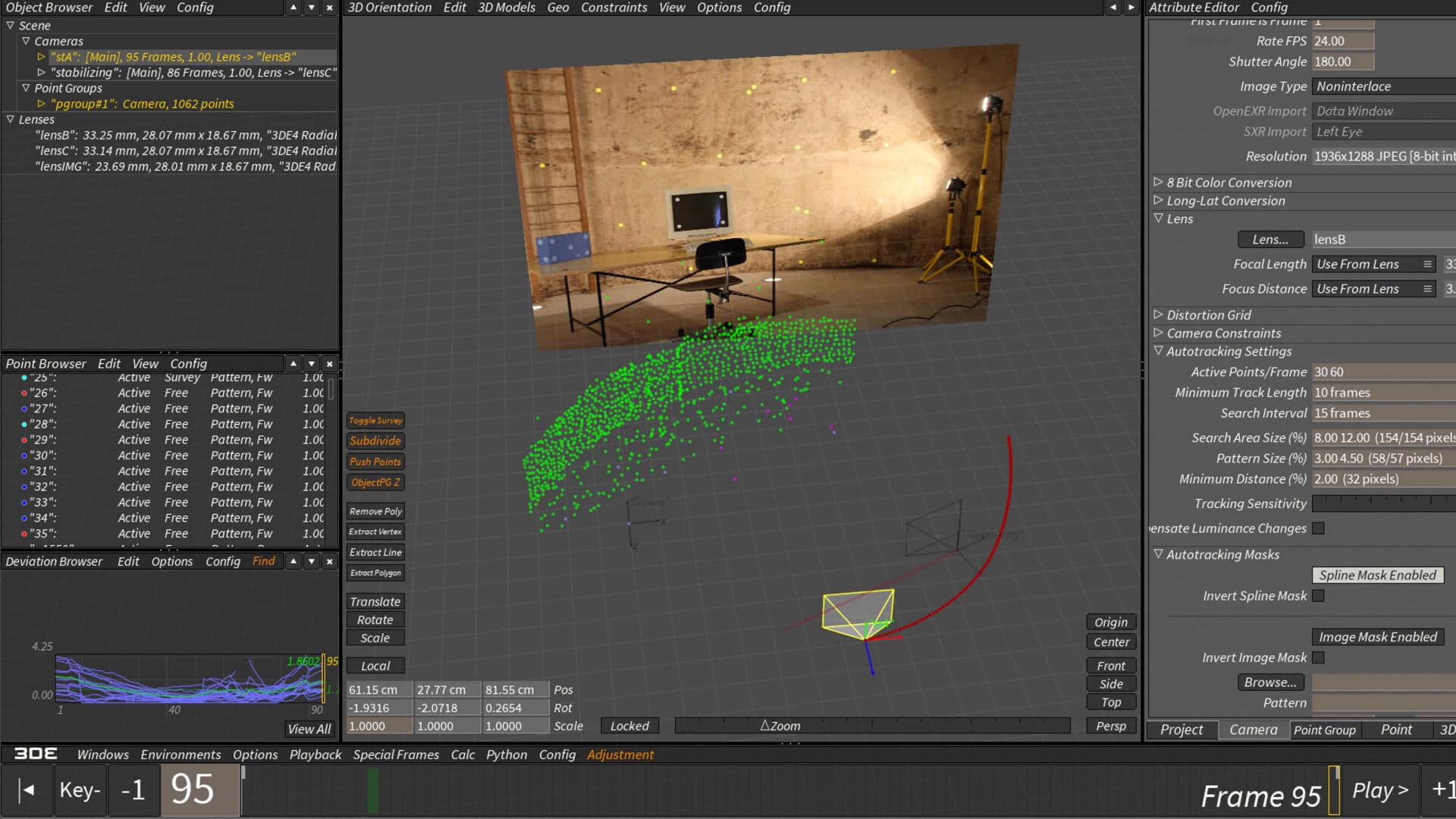news • 25 January 2024
Matchmoving for VFX Part Two: Solving Multiple Sequences in 3D Equalizer


Written by Carlos Poon
2D VFX Tutor
In my previous blog post I gave an overview of why matchmoving is so important in the VFX pipeline. Looking back at our original matchmoved scene, we were able to extract the camera position and orientation on every frame in time, giving us a camera motion path. We have also determined a good focal length for the camera that appears to work well.
In the previous video have also taken a small amount of 2D tracked points and placed them at the correct depth from the camera, giving us a few points on some of the objects, so that we can add some new CG objects into our filmed scene.
We can use a second camera sequence added to our original camera and try to solve them at the same time. This is an advanced method that reconstructs the position of two cameras together, while solving the XYZ position of 2D locators into a combined 3D scene.
The use of a second camera helps us in multiple ways:
- Data from a second camera can improve the overall quality of our reconstructed 3D scene.
- More data from a different angle helps the 2D points to be better positioned in 3D space, allowing us to place CG objects more accurately.
- A different view of our set allows us to place more CG objects in our scene, maybe behind objects that were not visible in our first shot camera.
Let’s look at this matchmoving process with 3dequalizer and Maya in the following video: MatchMoving for Visual Effects Part 02.


